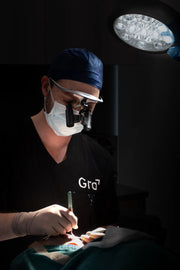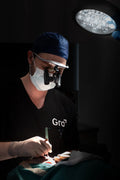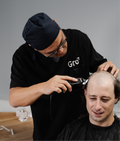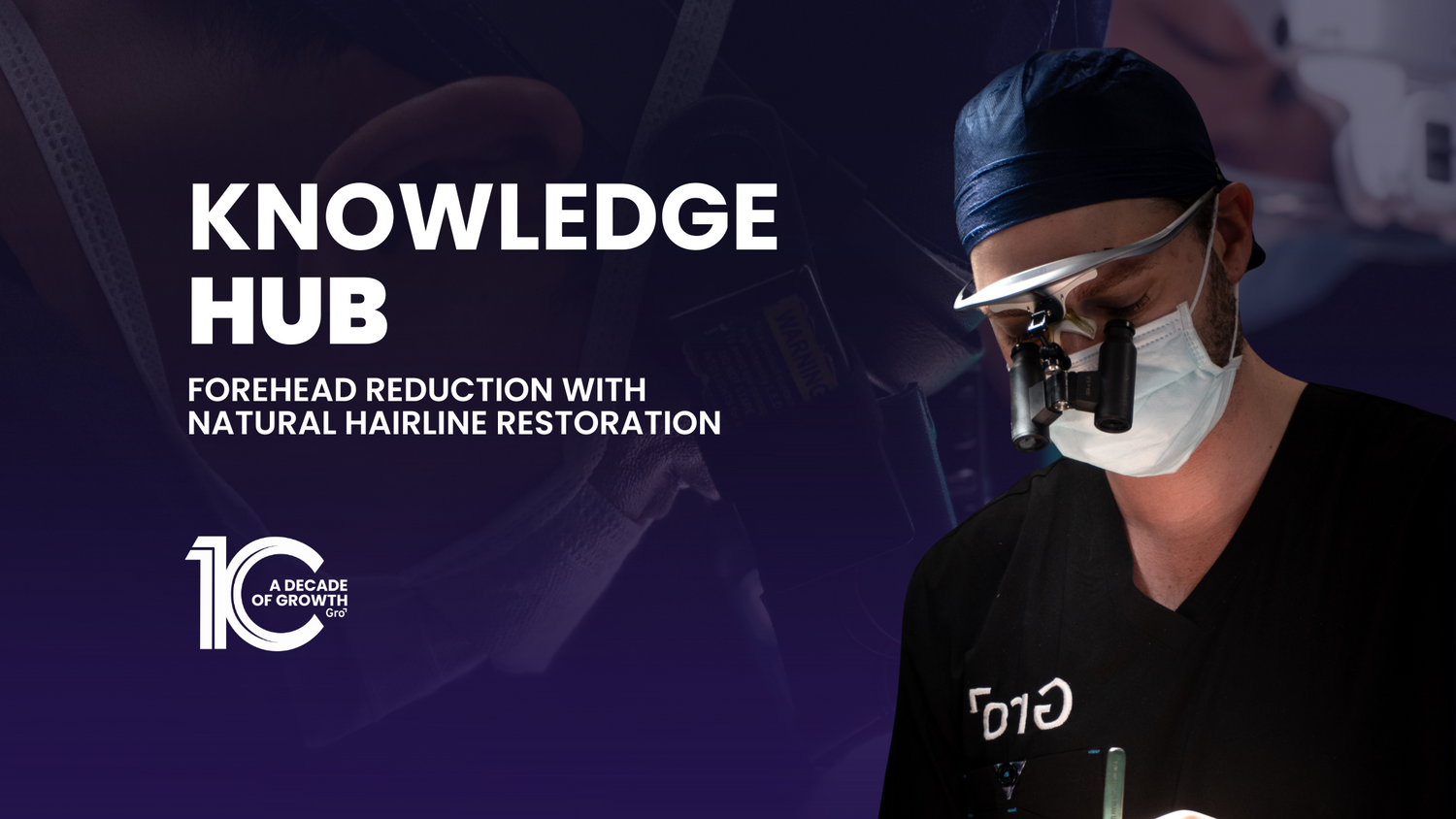A high or uneven hairline can be genetic or progressive. For some, it may be a source of confidence, while for others, it may feel like it dominates their facial features. At Gro Clinics, one option for addressing this is hairline lowering through a doctor-performed hair transplant—a method that avoids the invasiveness of traditional forehead reduction surgery.
What Is Considered a High Forehead?
While there's no fixed standard, a typical adult forehead height is around 6–7 cm for men and slightly less for women. Hairlines can vary widely due to genetics, ageing, or hair loss, with some people experiencing early recession and others noticing gradual thinning over time.
Goals of a Hairline-Lowering Procedure
- Reduce visible forehead size
- Enhance facial proportions and balance
- Restore or redesign the natural hairline shape
Options: Strip Removal vs Hair Transplant
Strip Removal (Not Performed at Gro)
One method, known as strip removal, involves surgical excision of forehead skin. It requires general or local anaesthetic, sutures, and post-operative downtime. While it can reduce forehead height, it often leaves a linear scar and may not be suitable for individuals with thinning hair or a history of keloid scarring.
Hair Transplant at Gro Clinics
Hair transplantation offers a non-surgical alternative for lowering the hairline. The procedure is performed under local anaesthetic and uses the patient’s own hair follicles, taken from the back or sides of the scalp and implanted into a new, custom-designed hairline.
Learn more about Gro's hair transplant method.
Advantages of a Hair Transplant Approach
- No stitches or scalpels
- Minimal visible scarring
- Individually placed grafts for natural appearance
- Doctor-performed procedure
- Designed to suit your facial features
- Uses your own hair
Costs and Considerations
Pricing varies depending on the number of grafts required and your desired hairline shape. To get an accurate recommendation, book a consultation with a Gro advisor. They'll provide a personalised overview of expected hair counts and investment options.
Gro also offers options for eligible clients to access their superannuation to help fund the procedure, if approved.
Next Steps
If you're exploring a hairline-lowering solution without invasive surgery, a hair transplant could be an effective option. Visit our hair transplant overview to learn more.
Gro Clinic Locations
Or call 1300 787 563 to speak with our team.



















